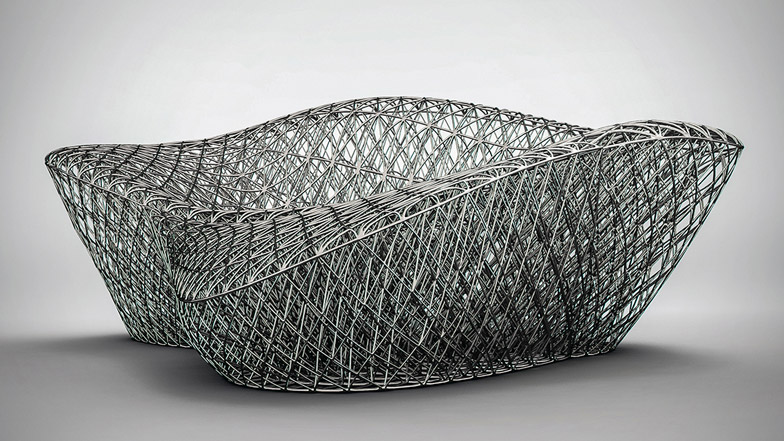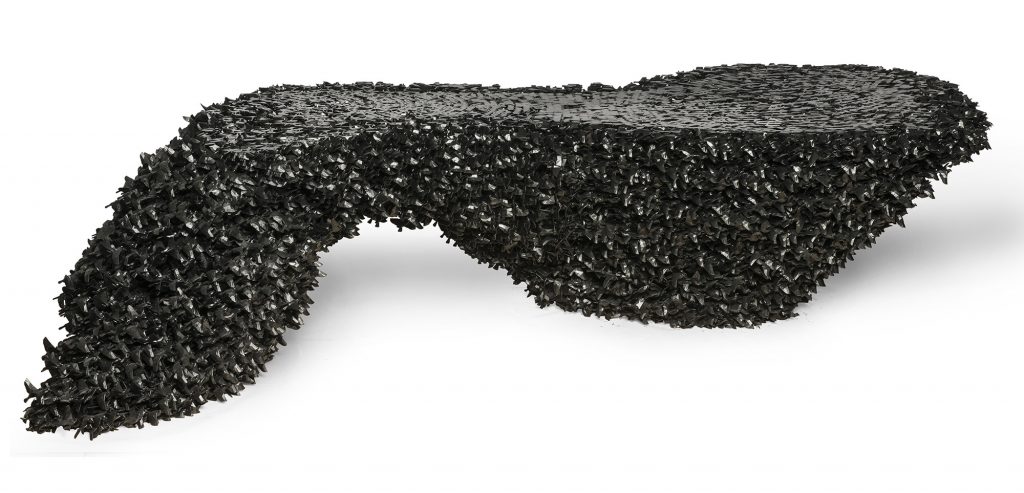The possibilities of Additive Manufacturing in our current industrial landscape goes beyond just the technology and industrial manufacturing opportunities.
The objects of today are adapted to the mechanical possibilities of the machinery in industry. Shapes and forms are a combination of our desires and imagination joined with the possibilities that our manufacturing processes offer us. We are working today with methods that are mostly subtractive, or they are based on making the same things efficiently and in significant quantities. These processes grow up together with the industries that they make possible and are shaped by these industries as a result.
The German Bauhaus and related modernist and minimalist movements were forged after the industrial revolution. Born out of an industrial optimism and world of new objects these movements still influence many objects and designers now. Bauhaus and the industrial design movements of the early 20th century are inescapable to a designer working today.
It makes sense that after 90 years of industrial revolution, this philosophy and style took on strength. The industry back then didn’t offer a great variety of techniques that would make organic shapes possible. It was a style of simple lines that for simplicity and rationality. So it was left to artisans and their craftsmanship to sculpt with their hands more natural shapes.
For the Bauhaus & Co. the standardization and democratization of design was a requirement to fulfill the needs of a mass society. Facing a growing society it makes sense that mass things made for the mass of people was a lofty goal.
“The creation of standard types for all practical commodities of everyday use is a social necessity” – Walter Gropius
If it was called then rationalism, this adaptation of style to industry, it might be fair to say today that the most reasonable thing to do now is to understand the opportunities that the manufacturing processes bring us and use them fully to their potential.
When it comes to objects, the endless possibilities of 3D printing open a scope that is hard to foresee. 3D printing brings the possibility of evolving from a language of straight lines and geometrical shapes into a world of organic forms and endless curves.

Sofa so Good by Janne Kyttanen is a full sized lounger which would not be possible to make using mass production methods.
Thinking of 3D printing as a small revolution within our Industry it is pleasant to imagine a new future shaped by this industrial process. In comparison with the methods that we mostly use now, where straight lines and geometrical shapes were the most efficient way to go, we are given the opportunity of creating the future in every dimension and shape we please. So let’s call it “reasonalism”, where form follows function and emotion is a function that form can follow.

The Starlings Table by Joris Laarman (2010) is made of 3D printed starlings and designed based on Starling flight patterns.
With 3D printing, we can work towards a new language where we are surrounded by curves and lines that are inspired by nature. We can bring a new sensitivity to our surroundings through textures and shapes that were not possible to industrially produce that long ago.

Olivier van Herpt´s 3D Printed Ceramics (2012) are functional and can each be unique.
Subscribe to Our Email Newsletter
Stay up-to-date on all the latest news from the 3D printing industry and receive information and offers from third party vendors.
Print Services
Upload your 3D Models and get them printed quickly and efficiently.
You May Also Like
U.S. Navy Lab Uses 3D Printing to Reduce Tooling Lead Time By Over 90%
The F-35 Lightning II Joint Program Office (JPO), responsible for life-cycle management of the key fifth-generation joint strike fighter (JSF) system used by the U.S., its allies, and its partners,...
Etsy Design Rule Change Reduces Selection of 3D Printed Goods
Online marketplace Etsy has implemented a rule change requiring all 3D printed goods on the site to be original designs. The update to the site’s Creativity Standards states, ¨Items produced using...
Honeywell Qualifies 6K Additive’s Nickel 718 for 3D Printed Aerospace & Defense Parts
6K Additive is renowned for manufacturing sustainable additive manufacturing (AM) powder, and offers a wide portfolio of premium metal and alloy powders that include titanium, copper, stainless steel, and nickel,...
MetalWorm Sells WAAM Systems to Research Institutes in Brazil and Malaysia
Turkish WAAM firm MetalWorm has sold a system in Malaysia and another in Brazil. This is an excellent example of a few emerging trends in additive. Firstly, WAAM was experimented...

































